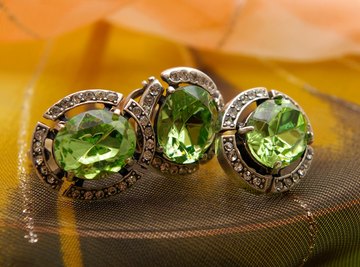
Hawaii is known for its volcanic activity. Volcanoes can change the formation of the land, and can also change the geology with the formation of gemstones. Gems native to Hawaii include peridot, obsidian and gem-like crystals called olivine, which contribute to Hawaii’s green beaches. These gems are formed through cooling lava, as well as heat and pressure. Another gem is black coral, which is a living organism used in jewelry.
Black Coral
Black coral is the state gem of Hawaii. Harvested for jewelry making and medicinal purposes, black coral is in fact an animal. Black coral comes from the same family as stony coral and sea anemones. They consist of polyps that live in colonies, creating a rigid structure that contains stinging cells. Black coral feeds on plankton that wash in on ocean currents. Many species of marine life are housed beneath spiny colonies of black coral, including fish and crustaceans. Typically black or brown, black coral can also be red, orange, green, yellow or white.
Peridot
Peridot is a gem that is lime or citrus-green in color. It forms deep within the earth due to extreme temperatures and pressure from volcanic activity in Hawaii. Native Hawaiians believe peridot to be the tears of the goddess Pele. It is also considered the birthstone for the month of August. The Island of Oahu has beaches whose sand is made up of small grains of peridot. Although large peridot gemstones can still be found in Hawaii today, many larger stones sold in Hawaii actually come from Arizona.
Obsidian
Obsidian is a smooth, glassy gemstone formed by cooling lava. Obsidian forms in a similar way to granite, but rapid cooling gives it a glassy texture because it does not crystallize. It is typically black or grey, but can also be brown, blue, green or clear. Some obsidian forms with tiny gas bubbles that give the gem a golden sheen. It is slightly harder than the glass used to make windows, and a drop or harsh blow can can break it.
Olivine
Hawaii is home to black and white sand beaches, and some Hawaiian beaches are green. Hawaii's green beaches, such as Mahana Beach, get their color from sand composed of olivine crystals, which are pieces of eroded lava rock. Found all over the world, olivine is composed of magnesium and iron silicate. It forms due to volcanic eruptions and magma on the ocean floor. Viewed up close, olivine appears to consist of tiny green crystals or gemstones, which give some Hawaiian beaches their green hue.
